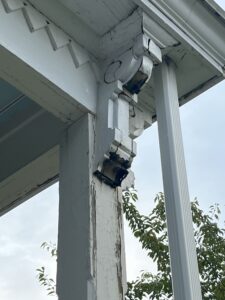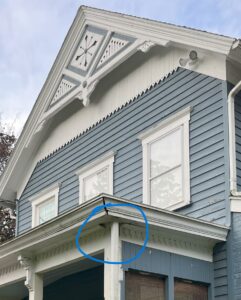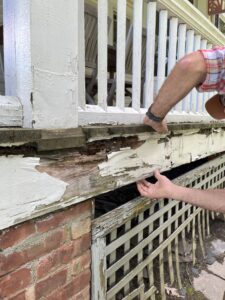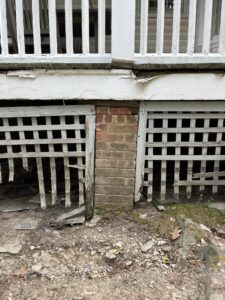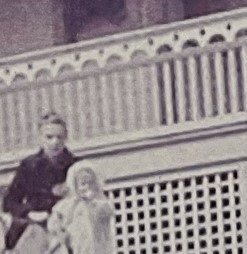“Summer afternoon—summer afternoon; to me those have always been the two most beautiful words in the English language.” ~ Henry James, as quoted by Edith Wharton
For Americans, the words “front porch” conjure a similar feeling of warmth, contentment, ease, nostalgia. Turned columns, spindled railings and fretwork, beadboard ceiling, a fan to encourage the breeze, rocking chairs, a jigsaw puzzle…all reminiscent of an age before automobiles, carports and garage entrances.
Along with their evocative symbolism, front porches also perform a variety of significant functions. They shelter comings and goings; provide a cool spot for conversation, reading and chores; shade the interior; and help visitors navigate the transition between public and private realms.
“The unclouded splendor and fierce heat of our summer sun render this very general appendage a source of real comfort and enjoyment.” ~ A.J. Downing
Front porches also declare a house’s architectural style louder than any other individual feature. Two-story fluted columns with Ionic capitals = Greek Revival! Scrolled corbels = Italianate! Exposed rafter tails = Arts and Crafts!
For all of their virtues, old house porches take a mighty beating. They are, by design, highly exposed to the elements. Without care, their wood elements are prone to rot. And then they can really get mucked up. The National Park Service devotes one of its wonderfully insightful and practical Preservation Briefs (#45, “Preserving Historic Wood Porches”) to common problems and solutions.
Some porches I’m currently helping owners rehabilitate show a range of typical issues.
- Built-in gutter failed and exposed corbels to chronic damp
- Corbels missing altogether at this corner
- More moisture damage to the skirt and lattice
- Brick pier off kilter from frost heave
These elements require careful consolidation or full replacement in kind, with eyes towards fixing the moisture problems that accelerated deterioration; proper materials, installation and finishes; and tightening up the maintenance regime.
In the image below, notice the decorative historic detail that is missing from the existing railing. This (as well as the missing corbels noted above) can be replicated in the carpenter’s shop to restore the original appearance. And reintroducing this element has the added benefit of achieving the code-required 36″ railing height for a porch that is this high off the ground. Bonus!
In projects like these, we rely on the expertise of several historic trades (see my blog post at CIRCA Old Houses on hiring the right trades for your job):
~ a preservation carpenter to repair existing wood elements and recreate missing ones using historically appropriate (and, with proper maintenance, durable) materials
~ a skilled painter to complete the wood prep and ensure a finish that lasts
~ a mason to realign and seal brick piers
~ an electrician to add lighting and electrical outlets
~ a gutter professional to redirect water away from wood elements and foundation
Eventually, we’ll need landscape design and contracting professionals to complete the curb appeal, mindful not only of aesthetics but also helping migrate moisture away from the porch structure. Let’s not leave out the plumber to install an outdoor spigot for (intentional!) watering.
When these projects are complete, we’ll all have earned a relaxing afternoon on the porch together, preferably with a round of tall, cool drinks.
